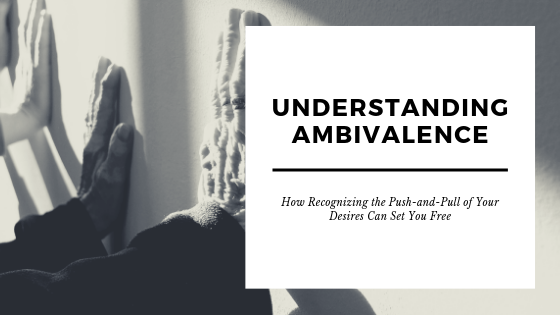Have you ever had the experience of someone who stands too close to you when they speak? It’s strange how we can recognize right away when someone crosses that invisible boundary line into our personal space.
According to Henry Cloud and John Townsend in their book Boundaries, boundaries are similar to property lines. They define what is your responsibility and what is someone else’s responsibility. They separate “me” from “not me”.
Let’s use a fence in your yard as an example. The fence line separates your property from your neighbor’s property. You wouldn’t climb the fence and mow the lawn in your neighbor’s yard: it would be inappropriate to take on that that level of responsibility for him or her. Similarly, you wouldn’t want your neighbor to use your property as if it were their own.
Emotional, physical, and relational boundaries work in much the same way. They are intended to protect you from harm. They help you to experience goodness in a way that feels safe. If a lack of boundaries led to you to feel the need to mow the lawns of everyone on your block, you would likely overexert yourself and be unable to maintain your own yard.
Yet it is important for these boundaries to be permeable: in a sense, to have a gate. That way, you can let your neighbors come over to visit and get out to spend time with your loved ones. Without permeable boundaries, you’ve built a fortress and isolated yourself inside.
The structure provided by these boundaries offers safety to those inside of them. It allows you to be confident in what you own.
Boundaries in our Families-of-Origin
The easiest way to see boundaries in action is to watch parents rearing their children. Take a toddler. Toddlers need limits. They need to know that if they place their hand on a hot stove, they’ll be burned. They need to be protected from harmful and dangerous activities.
At the same time, a toddler’s inquisitiveness about the world is a creative gift that can be quashed by strict rules based more on parents’ desires than children’s needs. Good boundaries with children are intended to provide safety rather than punishment or control.
If a child is exposed to a certain type of boundaries during development, they’re likely to internalize those boundaries. These can take the form of healthy boundaries and awareness of limits. But in dysfunctional families, often boundaries are more problematic. These boundaries can be too rigid, too loose, or an unpredictable combination of the two.
If you’ve been able to identify dysfunction in unspoken family rules or family roles in your family-of-origin, you may resonate with some of these descriptions below of the effects of unhealthy boundaries in your family.
Types of Dysfunctional Family Boundaries
Too Rigid/Strict
Parents who offer rigid boundaries use authoritarian parenting strategies or “helicopter” parenting. They attempt to protect their children by exerting too much control over them, not allowing them the opportunity to learn through failure.
These boundaries can feel more like walls than a fence: they are meant to keep the bad out, but they also prevent any nurturing or good to get in. These families may lack healthy affection and physical touch and struggle with intimacy. They might be characterized by a lack of praise or affirmation, focusing more on criticism and judgment for decisions. There is a tendency to hear more negatives than positives from these parents.
For the child, this style of boundaries can lead to dependency on the parents to define reality with a corresponding fear of risk-taking or failure. Impossibly high standards can be internalized in a way that fosters shame when they can’t be met. Perfectionism can develop, as this style of parenting associates a child’s value with their performance. Adults raised in this environment can experience stunted creativity.
Too Loose
Parents who offer too few boundaries and allow their children to have an inappropriate amount of freedom in childhood are opening their children up to harm. Similar to having no fence at all, the child has no idea where the limit of their responsibility are and are left vulnerable to harm. In childhood years, this can lead to engaging in more high-risk behaviors, such as alcohol and drug use. Children end up having to make adult decisions as children because they don’t receive adequate guidance from their parents.
Too few boundaries, while it might sound appealing especially to adolescents, can actually be scary for children, as they don’t know how to keep themselves from getting hurt. They miss out on learning skills necessary to protect themselves from harmful behaviors or experiences, and therefore face confusion and uncertainty in childhood.
In adulthood, those who had few boundaries can struggle with responding well to “no.” They may overindulge or have difficulty with discipline or follow-through. They may struggle with emotional regulation, as parents with loose boundaries often give in to temper tantrums, preventing children from learning healthy ways to cope with emotions.
Unpredictable Boundaries
One of the worst boundary styles parents can offer is an unpredictable combination of both strict and loose boundaries. This can happen when one parent offers strict boundaries while the other offers more loose ones, or when one or both parents alternate between the two extremes. This is typical of families with alcoholism or other addictions due to personality changes surrounding using the drug of choice.
Children in these families are given confusing messages of what is right and wrong. They alternate between the walled-in isolation of rigid boundaries with the fear associated with no boundaries at all. Never knowing what they can expect is crazy-making.
These children have learned to always be on guard for how their parents will respond. It’s easy then, as adults, to be wary of relationships and people-please to control others. They may lack confidence in setting limits with others because if they attempted to do so with their parents growing up, they would be unsure of what type of response they would receive.






















